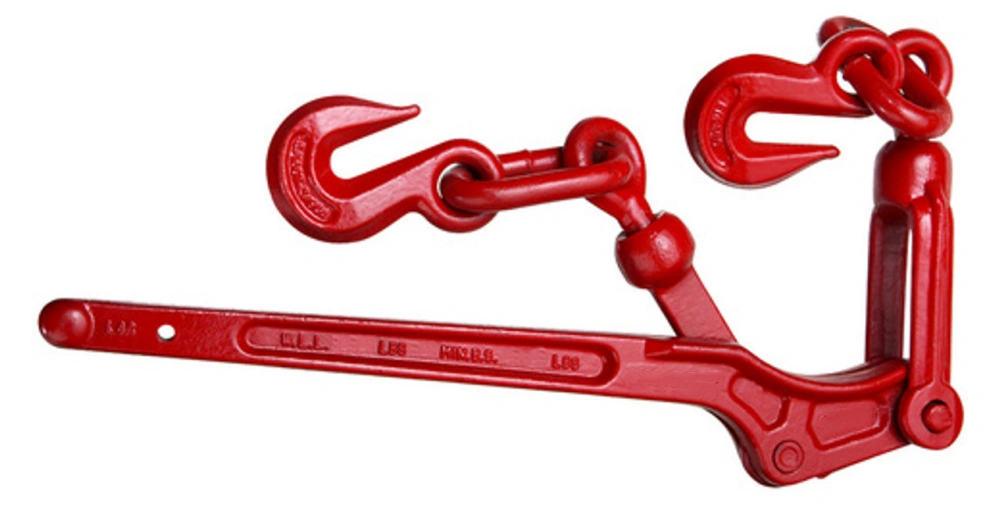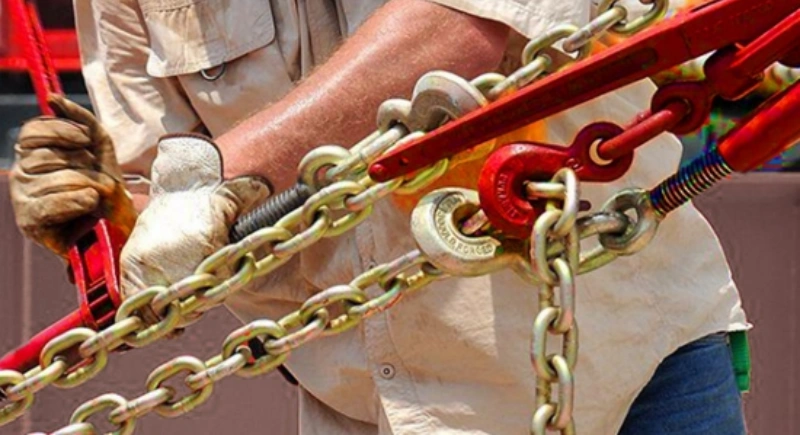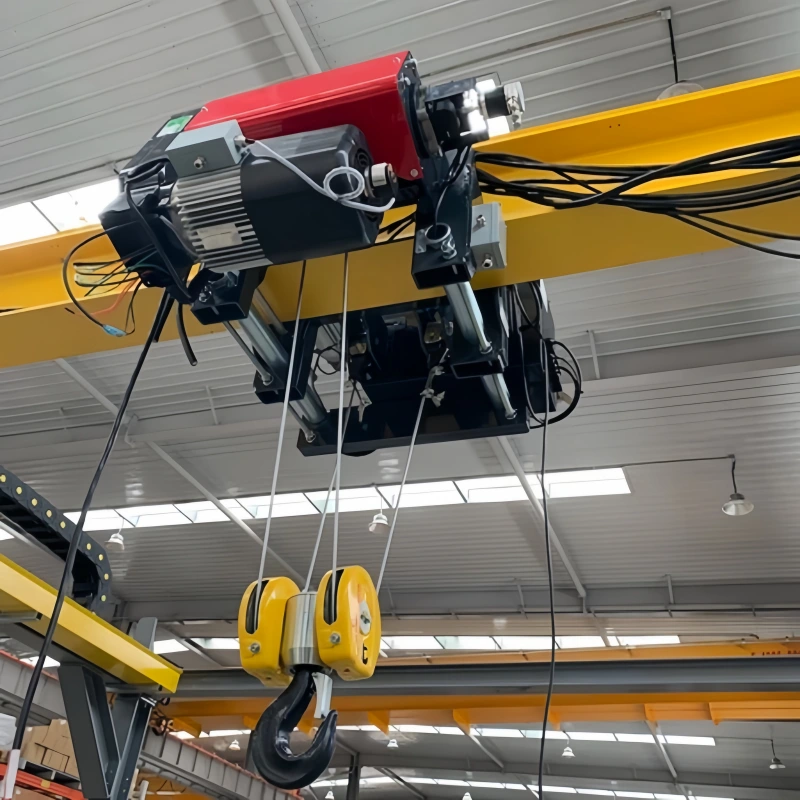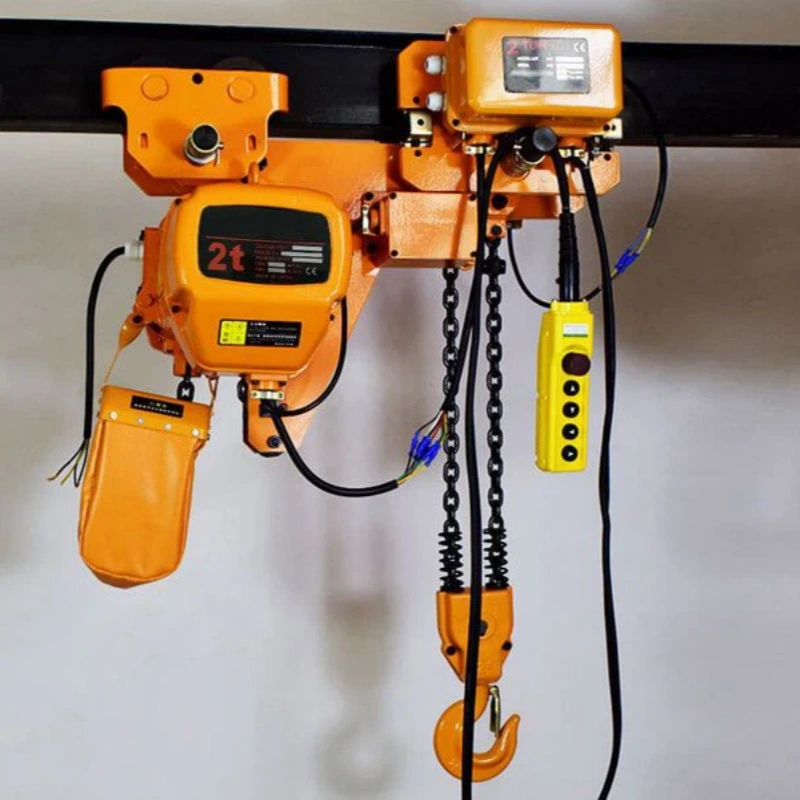A load binder secures cargo by tightening chains, preventing dangerous shifts during transportation. When you use load binders, you reduce the risk of accidents—recent statistics show that improper cargo securement causes 34% of incidents and increases the relative risk by 56.3%.
Legal regulations require each load binder to display its working load limit and pass regular inspections. You can choose between lever and ratchet types, each offering unique advantages for different tasks. The table below highlights key legal requirements for load binders:
Requirement | Description |
|---|---|
Working Load Limit (WLL) | Each chain and binder must have a visible marking indicating its WLL; aggregate WLL must be at least 50% of cargo weight. |
Number of Tie-Downs | Minimum number of tie-downs required based on cargo length and weight; e.g., a load under 10 feet requires at least two tie-downs. |
Inspection and Maintenance | Regular inspections of securement equipment are required; maintain records for compliance. |
Key Takeaways
Load binders are essential for securing cargo and preventing dangerous shifts during transportation, reducing the risk of accidents.
Choose the right type of load binder—lever for speed and simplicity, ratchet for precision and safety—to match your cargo needs.
Always check the working load limit (WLL) of your load binder to ensure it can safely handle your cargo weight.
Regularly inspect your load binders and chains for damage to maintain safety and compliance with legal regulations.
Using the correct size load binder and following proper securing techniques enhances cargo safety and reduces the risk of accidents.
Load Binder Features

Material and Durability
When you choose load binders, you want equipment that stands up to tough jobs. High-quality load binders use strong steel and advanced coatings to resist corrosion and wear.
Powerful Machinery uses only high-strength steel in its load binder products. This ensures each load binder can handle heavy loads and harsh environments. You benefit from products that meet or exceed international standards like ISO9001 and TUV Rheinland. These certifications show a commitment to quality and safety.
High breaking loads are crucial for safety, especially when cargo may shift during transportation.
Some advanced designs, like the Bulldog Binder™, offer a breaking load of 29,225 lbf, which is 61.8% higher than many competitors.
Features such as anti-twist mechanisms and ergonomic handles help prevent injuries and make operation easier.
Powerful Machinery’s load binders are tested in both labs and real-world conditions to ensure reliability.
Size and Compatibility
You need to match the size of your load binder to your chain and cargo. Load binders come in different sizes to fit various chain diameters. Using the right size ensures a secure fit and prevents slippage.
Powerful Machinery offers a wide range of sizes, so you can find the perfect match for your needs. Always check the product specifications to confirm compatibility with your equipment.
Tip: Using the correct size load binder reduces the risk of accidents and keeps your cargo secure during transportation.
Working Load Limit
The working load limit (WLL) tells you the maximum force a load binder can safely handle. You should always use load binders with a WLL that matches or exceeds the weight of your cargo.
Powerful Machinery clearly marks the WLL on every load binder, helping you stay compliant with legal requirements. This feature also makes inspections easier and improves overall safety.
Feature | Bulldog Binder™ | US Binder |
|---|---|---|
Breaking Load | 29,225 lbf | 18,077 lbf |
Safety Margin | Higher | Lower |
Anti-Twist Mechanism | Yes | No |
Compliance with Standards | Exceeds | Meets |
Risk Reduction | Significant | Moderate |
Choosing load binders with high working load limits and advanced safety features helps you protect your cargo and meet industry regulations. Powerful Machinery’s certified products give you peace of mind and reliable performance every time.
Load Binder Types

Powerful Machinery has built a reputation for manufacturing high-quality load binders. You can trust their certified product range for reliable cargo securement. The company offers two main types of load binders: lever load binders and ratchet load binders.
Each type suits different needs and working conditions. Understanding the differences helps you choose the right equipment for your transportation tasks.
Lever Load Binder
Lever load binders use a simple lever mechanism to tighten chains. You operate the binder by pulling the handle, which applies tension to the chain and secures your cargo.
This type of load binder works well when you need quick installation and removal. The lever mechanism stores energy in the handle, so you must use more manual strength to achieve the desired tension.
You will find lever load binders easy to install because they have fewer moving parts. The design allows you to secure loads rapidly, which saves time during busy operations. Powerful Machinery’s lever load binders feature high-strength steel and ergonomic handles. These features improve safety and reduce the risk of injury.
Tip: Always check the working load limit before using lever load binders. This ensures your equipment matches the weight of your cargo.
Ratchet Load Binder
Ratchet load binders use a ratchet mechanism with a screw thread to multiply force. You turn the handle back and forth, which gradually tightens the chain. This process gives you more control over tension and increases safety.
Ratchet load binders require less manual force, making them ideal for heavy-duty cargo and long hauls.
The ratchet mechanism locks in place, so you do not need to worry about sudden release or loss of tension. You can use ratchet load binders for a wide range of haul sizes and weights.
Powerful Machinery’s ratchet load binders offer precision tensioning and enhanced safety features. The robust construction ensures reliable performance in demanding environments.
Note: Ratchet load binders take more time to tighten compared to lever load binders, but they provide greater control and safety.
Comparison
You need to compare lever load binders and ratchet load binders to select the best option for your job. The table below highlights the main mechanical differences between these two types of load binders:
Feature | Lever Load Binders | Ratchet Load Binders |
|---|---|---|
Mechanism | Simple lever with tension hooks | Lever and screw thread for force multiplication |
Take-up Distance | Shorter, less controlled | Longer, more controlled and safer |
Energy Storage | Stores more energy in the handle | Stores less energy due to gear mechanism |
Installation | Easy installation with fewer moving parts | Slower installation but safer take-up process |
You also need to consider the force required to operate each type:
Type of Binder | Force Requirement | Mechanism Description |
|---|---|---|
Lever Binder | Higher | Requires more manual strength to tighten and secure the chain. |
Ratchet Binder | Lower | Provides greater mechanical advantage, needing less pulling force to achieve the same tension. |
Ratchet load binders offer several advantages for heavy-duty cargo securement:
Advantages | Disadvantages |
|---|---|
Enhanced safety due to the locking mechanism | Takes more time to tighten compared to lever binders |
Precision in tensioning with a ratcheting mechanism | |
Ease of use, even under heavy loads | |
Can handle a wide range of haul sizes and weights |
You should choose lever load binders when you need speed and simplicity. Ratchet load binders work best when you want precision and safety for heavy loads.
Powerful Machinery provides both types of load binders, so you can select the equipment that fits your needs. You improve cargo securement and reduce risks by understanding the types of load binders available.
How to Use Load Binders?
Step-by-Step Guide
You can secure your cargo safely and efficiently by following a clear process. Proper usage of load binders helps you avoid accidents and ensures your load stays in place during transportation and logistics operations. Here is a step-by-step guide for using both lever and ratchet types:
Inspect Your Equipment
Check your load binder, chain binder, and chains for any signs of wear, cracks, or bending. Confirm that the working load limit and load capacity match your cargo requirements. High-quality load binders from Powerful Machinery display these ratings clearly.Position the Chains
Place the chains over your cargo. Make sure the chains cover the load evenly and reach secure anchor points on your vehicle.Attach the Load Binder
Hook the load binder to the chain links. For lever binders, connect both hooks to the chain, leaving enough slack for tightening. For ratchet binders, attach the hooks and ensure the ratchet mechanism is in the open position.Tighten Chains
With a lever binder, pull the handle downward by hand to tighten chains. Always keep your body clear of the handle’s path.
With a ratchet binder, turn the handle back and forth. The ratchet mechanism allows you to apply tension gradually and safely.
Check Tension and Security
Inspect the chains and binder to confirm everything is tight and secure. The cargo should not shift or move.Repeat for Additional Tie-Downs
If your load requires more than one binder, repeat the process for each chain.Final Inspection
Walk around your vehicle and check all points of load securing. Make sure every binder and chain is locked in place.
Tip: Always follow the North American Cargo Securement Standard. This rule helps prevent cargo loss, vehicle damage, and accidents by requiring securement in all directions.
Safety Tips
You protect yourself and others by following key safety considerations when using load binders. These tips help you avoid injuries and keep your equipment in top condition:
Inspect the load binder for wear, cracks, or bending before each use.
Do not use a cheater bar to tighten or release the binder. Always tighten by hand in a downward motion.
Operate the lever binder only when you stand on the ground with a secure footing. Never operate it while standing on the load.
Keep your head and body out of the handle’s path to avoid injury if the handle snaps back.
Do not allow more than one person to operate a lever binder at the same time.
Wear gloves to protect your hands and improve your grip.
Make sure no one stands on the cargo while you operate the binder.
Regularly check the binder and chains during transit to ensure continued safety and stability.
Note: Powerful Machinery’s high-quality load binders meet strict safety standards and undergo rigorous testing. This commitment to safety gives you confidence in every job.
Common Mistakes
Many operators make errors that can lead to accidents or cargo loss. You can avoid these common mistakes by staying alert and following best practices:
Ignoring Friction
Some people rely only on the weight of the cargo and forget that friction plays a big role in load securing. This mistake can cause loads to shift, especially on smooth surfaces.Incorrect Use of Tie-Downs
Using tie-downs at the wrong angle or with too little tension reduces their effectiveness. Always follow proper usage guidelines for your equipment.Not Stabilizing Tall Loads
Tall cargo needs extra attention. If you do not stabilize it, the load may tip during transportation.Skipping Regular Checks
Loads can shift as you drive. Failing to check your restraints during transit increases the risk of movement and accidents.Using Damaged Equipment
Never use a load binder, chain binder, or chain that shows signs of damage. Damaged equipment cannot provide the required breaking strength and may fail under stress.
Callout: Avoid these mistakes to take full advantage of your load binders’ safety features and maintain the highest level of safety and stability for your cargo.
By following these steps and tips, you ensure proper usage of your load binders. You protect your cargo, your equipment, and yourself every time you tighten chains for transportation.
Cargo Securement and Safety
Legal Compliance
You must follow strict rules when you secure cargo for transportation. The Department of Transportation and FMCSA require you to use load binders that meet specific standards.
These rules help you avoid fines and keep everyone safe on the road. Load binders play a key role in meeting these legal requirements. Manufacturers must mark the working load limit on each load binder. You need to use the right devices to prevent cargo from shifting or falling.
Evidence | Description |
|---|---|
Load binders are essential for securing heavy cargo | Their proper use is mandated by the FMCSA, ensuring compliance with safety regulations. |
Compliance prevents fines and penalties | Adhering to cargo securement regulations protects drivers and other road users. |
FMCSA establishes comprehensive standards | These standards govern all aspects of cargo securement, including load binders. |
Regulations specify appropriate devices | All cargo securement devices must prevent loads from shifting or falling. |
The working load limit must be marked | Manufacturers must clearly mark the WLL on each load binder for proper use. |
If you fail to comply, you may face serious penalties:
Citations and fines can reach high amounts.
Vehicles may be ordered out of service, causing delays.
You risk increased liability if an accident occurs.
• Civil penalties for knowing violations can reach up to $102,348 for each violation. • If violations result in serious harm or property destruction, penalties can increase to $238,809.
Accident Prevention
Load binders help you prevent accidents by keeping cargo secure. When you use the right load binder and check your equipment, you lower the risk of cargo shifting during transit.
This reduces the chance of injury and property damage. You should inspect your load binders before every trip. Powerful Machinery tests each load binder to ensure it meets safety standards. You gain peace of mind knowing your cargo will stay in place.
Tip: Regular inspections and proper use of load binders protect you and others on the road.
Industry Applications

Many industries rely on load binders for safe cargo securement. You see them used in construction, marine, and transportation. Each industry has specific requirements for equipment and cargo safety.
Requirement | Description |
|---|---|
Minimum Tie-Downs | Four tie-downs are required for heavy equipment over 10,000 pounds |
Working Load Limit (WLL) | Must support at least ½ the weight of the cargo |
Specific Regulations | Additional tie-downs are required for certain equipment, like boom loaders |
Binders Rating | Must meet the minimum standard of the working load limit of the chain used |
Powerful Machinery supports these industries by providing reliable load binders that meet all standards. You benefit from their certified products, which offer advantages like durability and ease of use. When you choose the right load binder, you improve safety and efficiency in every cargo operation.
Conclusion
You improve cargo safety and meet legal standards when you choose certified load binders. Look for clear working load limits, proper size, and trusted certifications. The table below highlights key points for selecting a load binder:
Key Point | Description |
|---|---|
Load Binder Types | Ratchet and lever, each with unique safety features. |
Size and Capacity | Match chain size and working load limit to your needs. |
Safety Considerations | Use strong chains and understand binder risks. |
Cost | Prices vary by model and strength. |
To keep your load binders reliable, inspect for damage, check hooks and chains, and clean off rust. Lubricate ratchet mechanisms and replace worn parts.
Certified products from Powerful Machinery address common concerns with clear labeling, rigorous testing, and innovative safety features. You protect your cargo and yourself by following these tips.
FAQ
What are load binders used for?
You use load binders to tighten chains and secure cargo during transportation. They help prevent your load from shifting or falling off your vehicle.
How do I choose the right size load binder?
You should match the binder size to your chain diameter and cargo weight. Always check the working load limit to ensure safe and proper use.
Can I use load binders in all weather conditions?
You can use most load binders in rain, snow, or heat. High-quality models have coatings that resist rust and corrosion, so they last longer outdoors.
How often should I inspect my load binders?
You should inspect your load binders before every trip. Look for cracks, bends, or worn parts. Replace any damaged equipment right away to stay safe.
Are lever and ratchet binders interchangeable?
You can use either type for securing cargo, but each works best for different tasks. Lever binders offer speed, while ratchet binders provide more control and safety.


